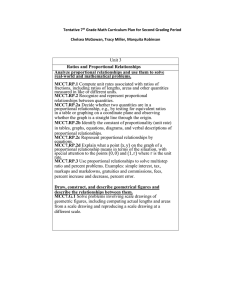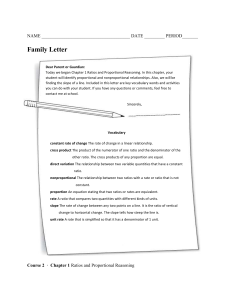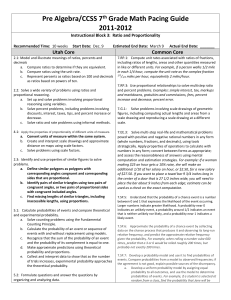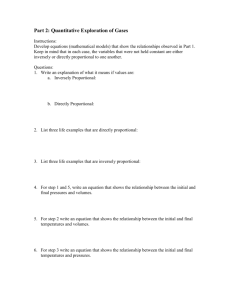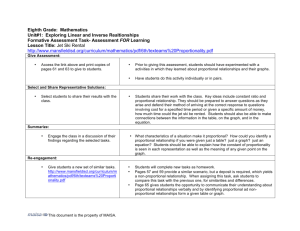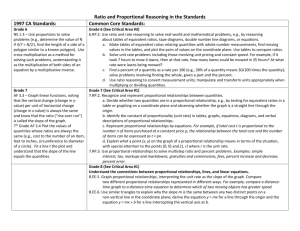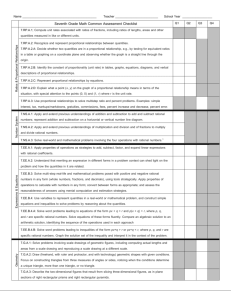7th Grade Math 3rd Period Standards
advertisement
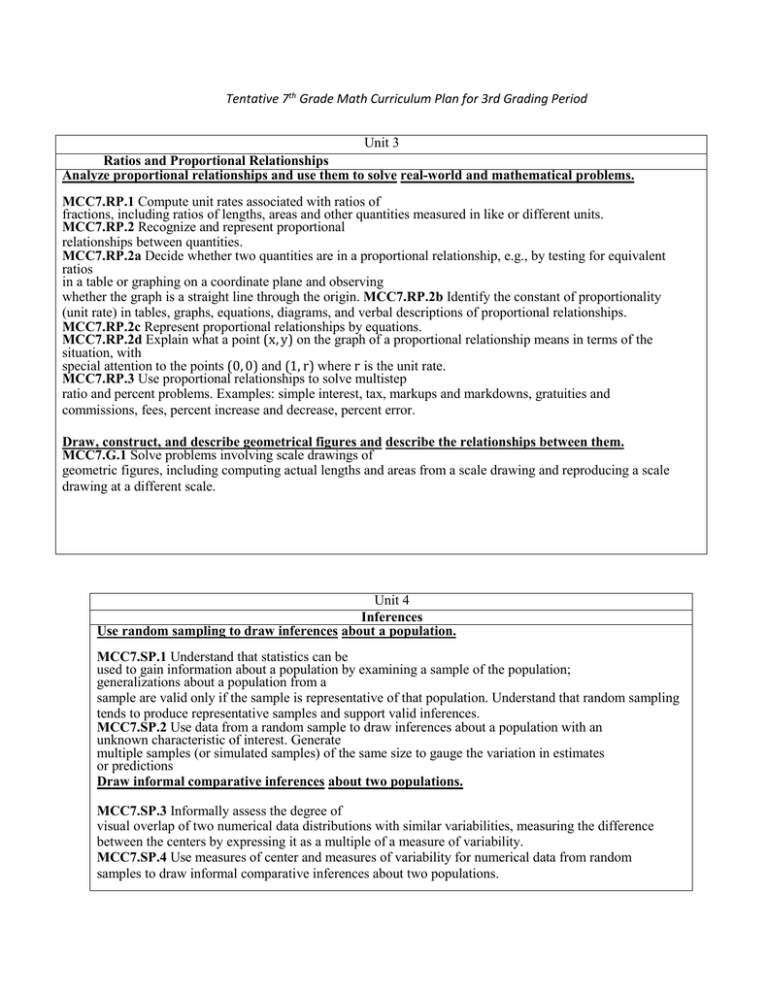
Tentative 7th Grade Math Curriculum Plan for 3rd Grading Period Unit 3 Ratios and Proportional Relationships Analyze proportional relationships and use them to solve real-world and mathematical problems. MCC7.RP.1 Compute unit rates associated with ratios of fractions, including ratios of lengths, areas and other quantities measured in like or different units. MCC7.RP.2 Recognize and represent proportional relationships between quantities. MCC7.RP.2a Decide whether two quantities are in a proportional relationship, e.g., by testing for equivalent ratios in a table or graphing on a coordinate plane and observing whether the graph is a straight line through the origin. MCC7.RP.2b Identify the constant of proportionality (unit rate) in tables, graphs, equations, diagrams, and verbal descriptions of proportional relationships. MCC7.RP.2c Represent proportional relationships by equations. MCC7.RP.2d Explain what a point (x, y) on the graph of a proportional relationship means in terms of the situation, with special attention to the points (0, 0) and (1, r) where r is the unit rate. MCC7.RP.3 Use proportional relationships to solve multistep ratio and percent problems. Examples: simple interest, tax, markups and markdowns, gratuities and commissions, fees, percent increase and decrease, percent error. Draw, construct, and describe geometrical figures and describe the relationships between them. MCC7.G.1 Solve problems involving scale drawings of geometric figures, including computing actual lengths and areas from a scale drawing and reproducing a scale drawing at a different scale. Unit 4 Inferences Use random sampling to draw inferences about a population. MCC7.SP.1 Understand that statistics can be used to gain information about a population by examining a sample of the population; generalizations about a population from a sample are valid only if the sample is representative of that population. Understand that random sampling tends to produce representative samples and support valid inferences. MCC7.SP.2 Use data from a random sample to draw inferences about a population with an unknown characteristic of interest. Generate multiple samples (or simulated samples) of the same size to gauge the variation in estimates or predictions Draw informal comparative inferences about two populations. MCC7.SP.3 Informally assess the degree of visual overlap of two numerical data distributions with similar variabilities, measuring the difference between the centers by expressing it as a multiple of a measure of variability. MCC7.SP.4 Use measures of center and measures of variability for numerical data from random samples to draw informal comparative inferences about two populations.

